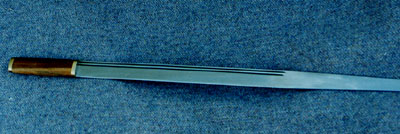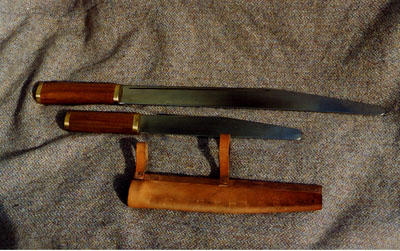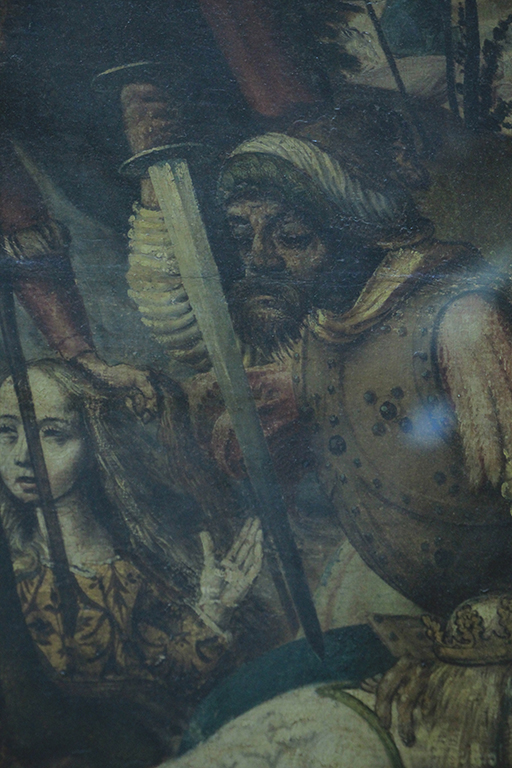I was browsing through the catalogues at Hermann Historica and came across these 3 extremely long daggers:
http://www.hermann-historica.de/auktion/hhm50...b=A-50.txt
Ritterlicher Dolch,
deutsch, 1.Hälfte 15.Jhdt. Lange, beidseitig gegratete Klinge mit gebogener Parierstange und facettiertem Kugelknauf. Mit Wachs konservierter Bodenfund mit guter Substanz. Seltener Dolchtyp. Länge 60 cm.
Google's not so good translation:
Knight's Dagger,
German, 1st half 15th century. Long, curved blade with both sides gegratete guard and faceted pommel ball. With growth of conserved land fund with good substance. Rare type of dagger. Length 60 cm.
http://www.hermann-historica.de/auktion/hhm53...at53_p.txt
A French dagger
14th century
Long, double-edged blade with ridges on both sides and stamped decoration on the ridges. Slightly curved quillons with marks stamped on the rectangular tapered tang. Round iron pommel, in cross section a pointed oval. The entire length is unusually well preserved for an underwater discovery, the point is slightly corroded and it has a black patina. Length 59 cm.
Cf. Müller/Kölling, Europäische Hieb- und Stichwaffen, p. 177, No. 59.
http://www.hermann-historica.de/auktion/hhm61...at61_w.txt
A dagger from the Battle of Castillon, 1453,
discovered in Castillon-la-Bataille. Slender thrusting blade of diamond section. Tapered quillons slightly curved toward the blade. Narrow tang, the slightly oval disk pommel tapering towards the top. Length 59.5 cm.
Provenance: Dordogne or Lidoire in the vicinity of Castillon-la-Bataille. So far only three daggers are known from this discovery site, along with a total of about 80 medieval swords discovered there. Cf. E. Oakeshot in "The Tenth Parklane Arms Fair". p. 9.
Danny





